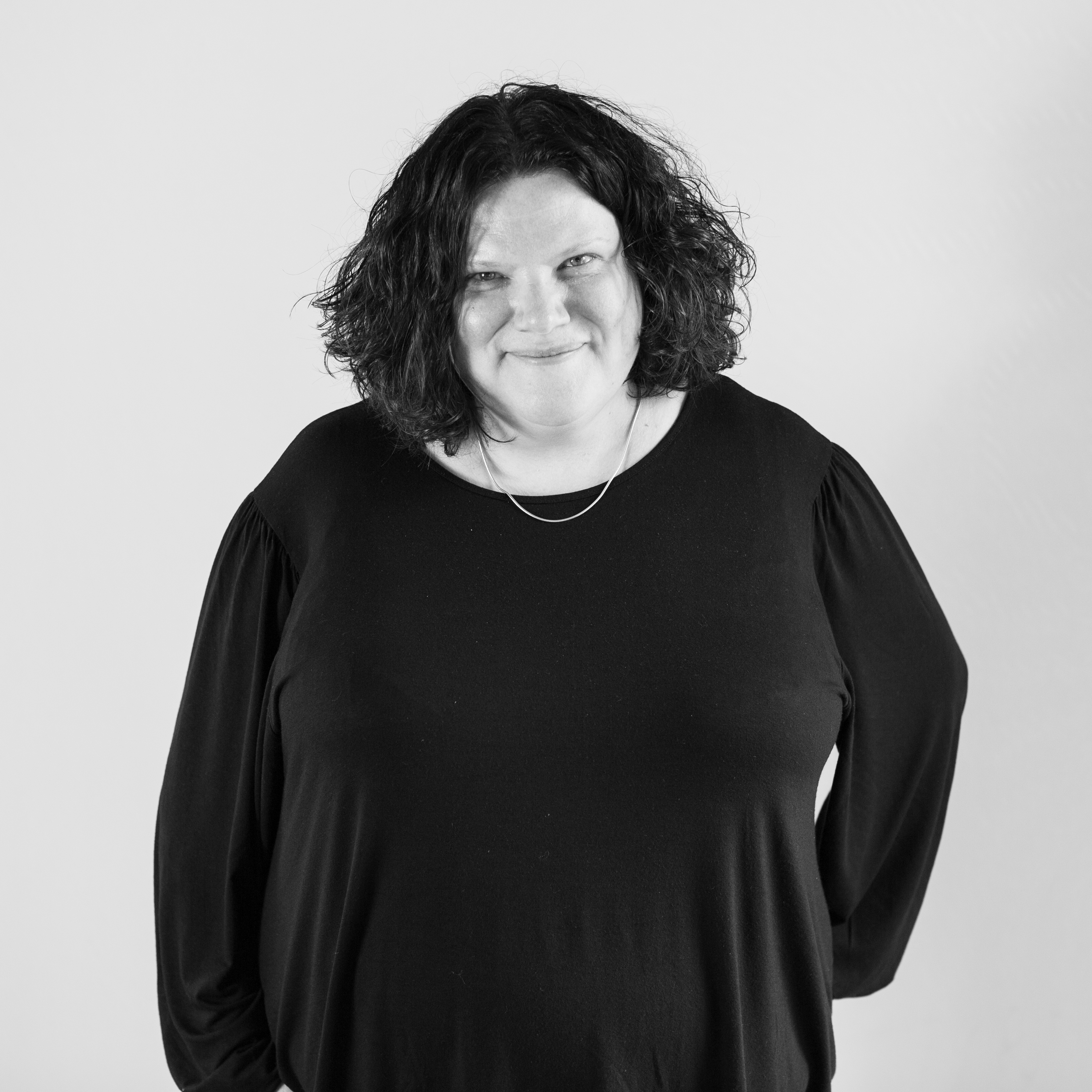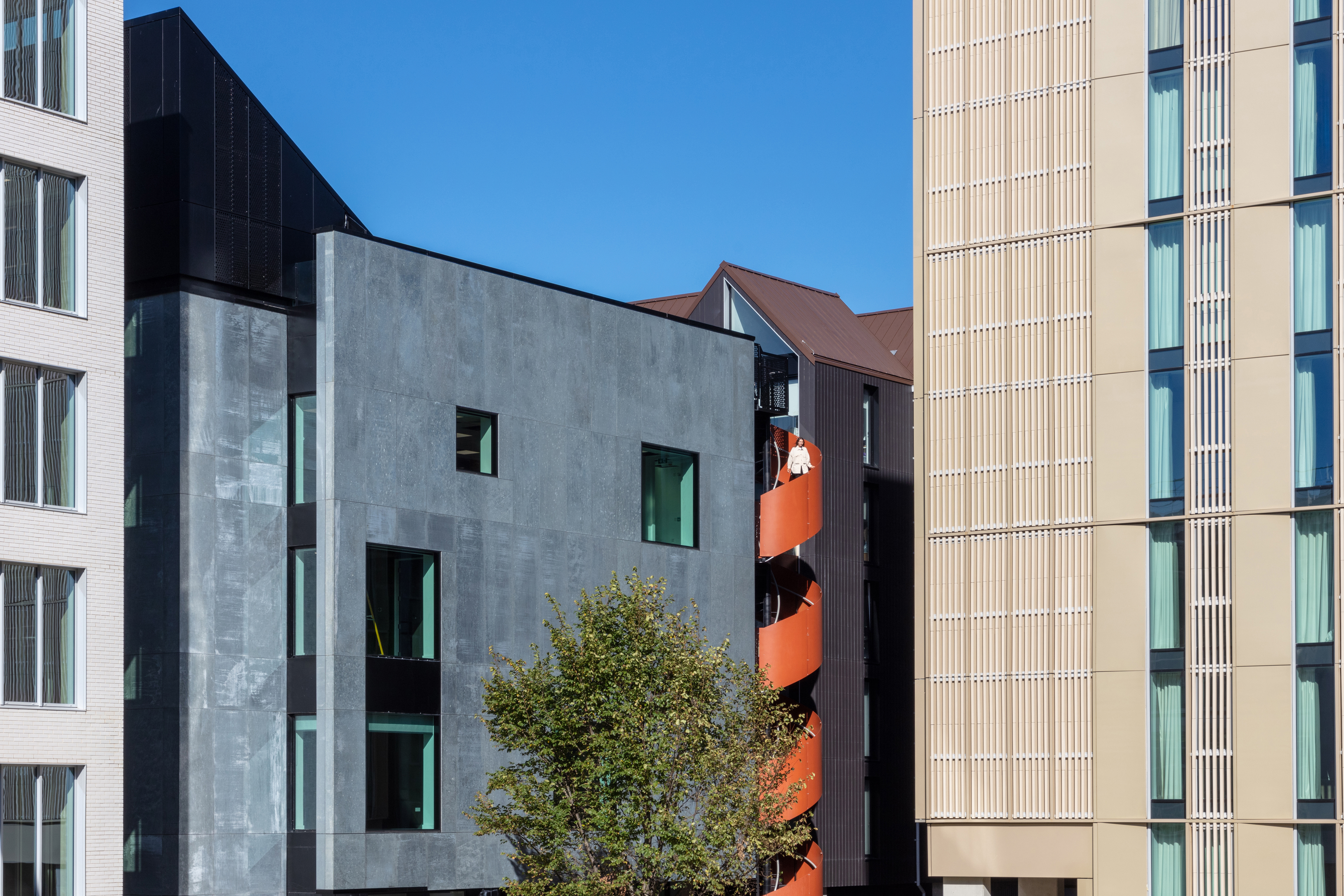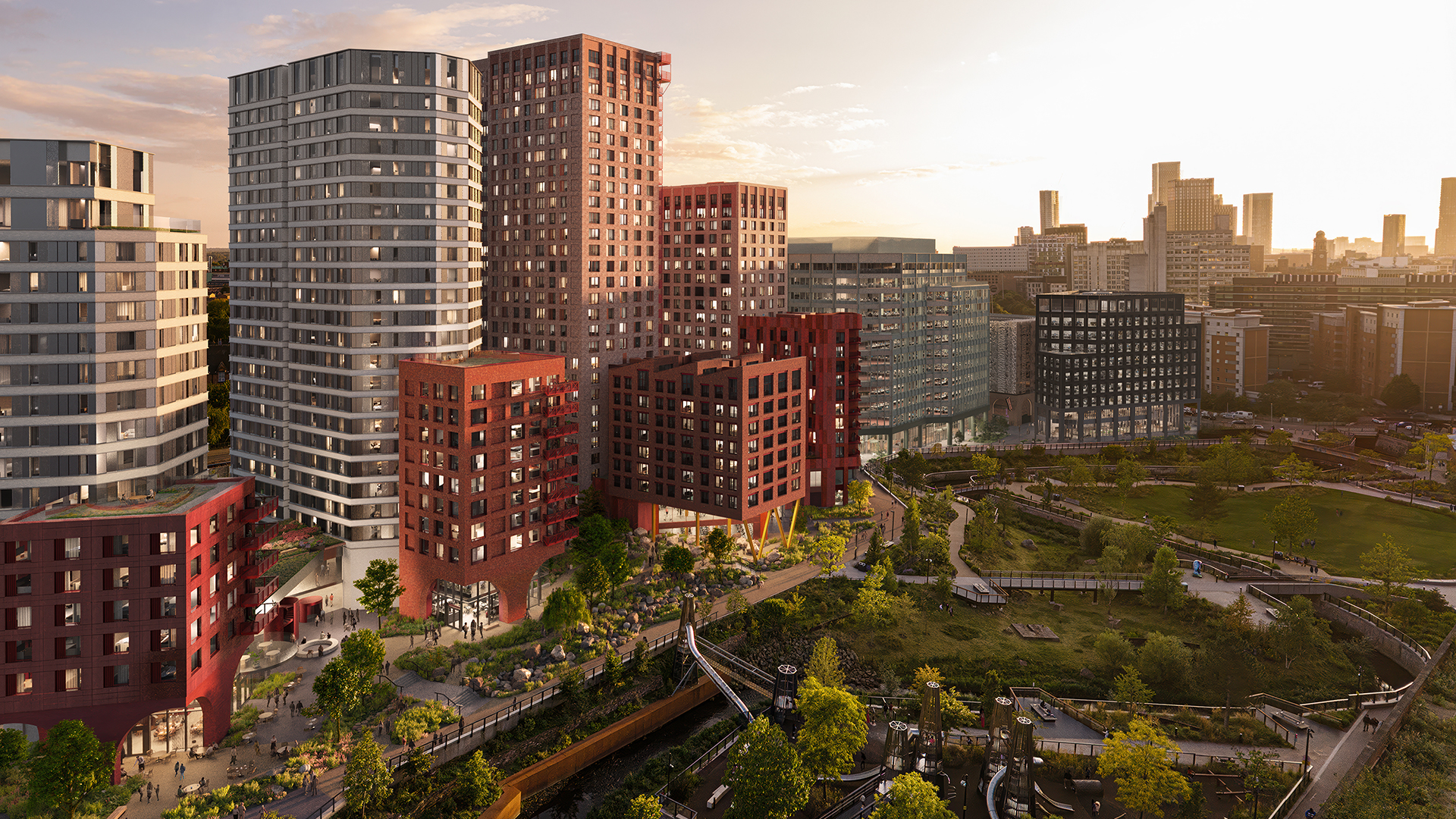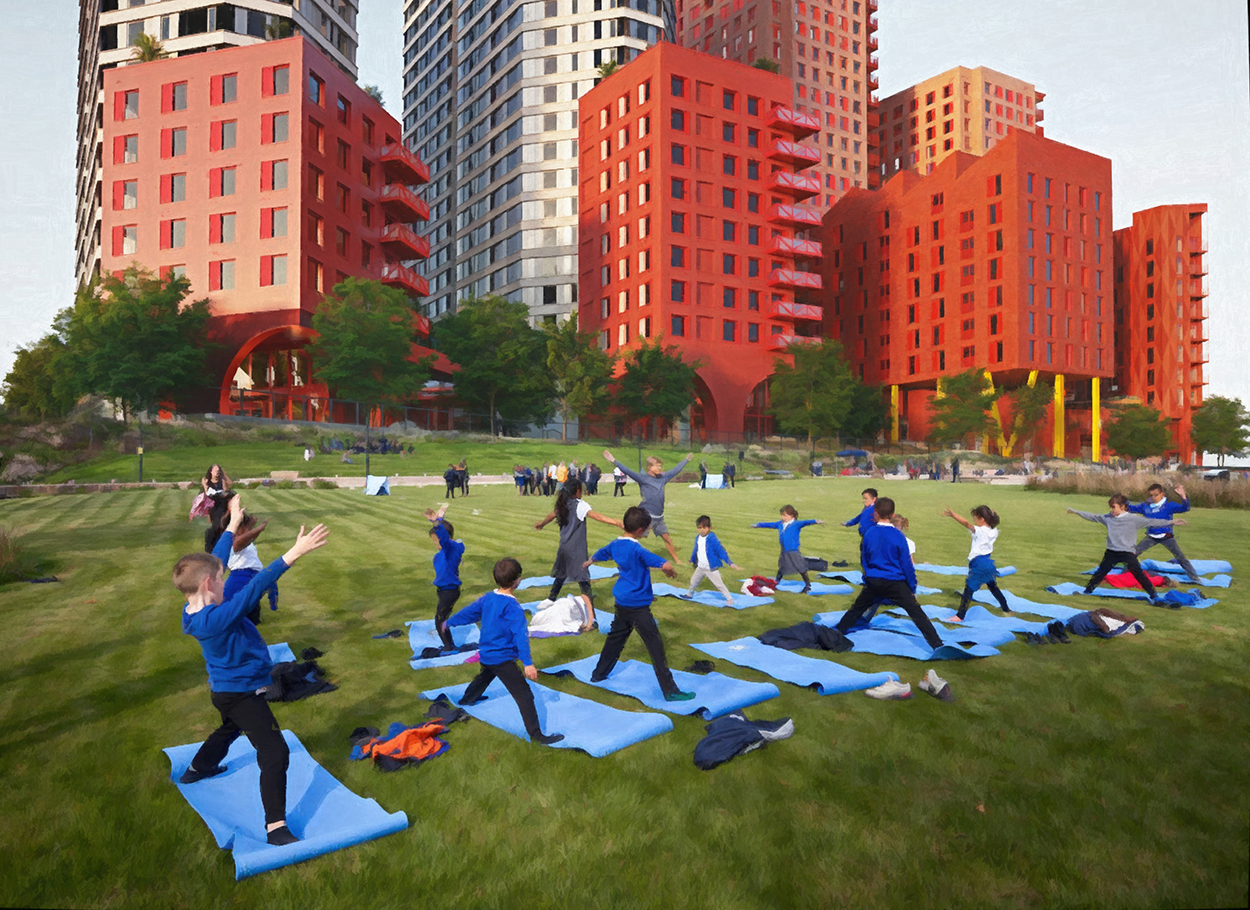Can you tell us a bit about your current role and career so far?
Hazel: I’m MD of shedkm – a nationally recognised architectural practice. We started in Liverpool 28 years ago and I joined within 6 months – helping to grow a second studio in London 12 years ago and more recently a third in Manchester. My role is very much One Practice – advocating and leading the brand and collective approach across all areas of what is now an Employee Owned Trust.
What’s been the highlight? And what continues to get you out of bed in the morning?
Hazel: Developing a competitive architectural offer while fostering a positive work environment with a caring, family-like ethos has been pretty special. Marrying ambition and the ability to stay relevant in our industry with an embedded and genuine commitment to the development of individuals who make up the team.

shedkm is known for its bold, colourful, engaging schemes which think differently, and are economically and socially transformative. How do you balance innovation and heritage – pushing boundaries for the future while respecting the past?
Hazel: I guess everything we do is a balancing act. As I mentioned before, the balance of commercial success with ethos and culture has driven me. Mediating a desire to create forward-thinking, innovative schemes within a heritage context is a similar challenge. I often say that architects are mediators – we are entrusted to come up with the right solution and to shape places that appease both client and city planning guardians, for example.

Circus Street - regeneration of derelict fruit and veg market - © shedkm
Mayfield Park, Manchester has just featured in the press. How did this balance play out there?
Hazel: We always feel a scheme has context and community, even if it’s a new build opportunity on what first appears a derelict site. At Mayfield, there was an historic community and infrastructure that previously shaped the site, which we were initially inspired by – the heroic engineering of the Victorians who created the viaduct context!
Mayfield Park has been delivered now which gave us a second context – the new urban population of Manchester that enjoys, not only city living but nature and leisure/play space is quite a rarity in urban centres. These two ingredients helped innovate a bold confident design with a ground-up approach to place.

Mayfield, Manchester - © shedkm
We both have studios in Liverpool. With major investments and infrastructure projects reshaping the North, what opportunities do you see for transformation within architecture and urban design in the region?
Hazel: I see an opportunity to grow populated areas where people love to live within cities and close to nature. The ability for the next generation to settle and stay in areas comes through infrastructure and connections, which drives regeneration and in turn the upward spiral of investment. In my eyes, the investment then raises the bar as it creates competition and gives the public/building users a right to better design and better placemaking; generally raising standards and hopefully giving those of us with vision to create the best possible solutions a chance of appropriate commissions.
The North is starting to have its day but it does need further investment in infrastructure projects to bring stability to this regrowth.
As with all industries, technology is reshaping real estate and design. Are tools like AI and immersive experiences influencing your work?
Hazel: AI is becoming more and more referenced in our architectural world. It has crept in through administrative exercises to date but I know the larger companies are investing in AI development – especially where they have a ‘brand’ and signature way of designing, they are ‘teaching’ AI to evolve to respond to a brief in a certain way.
For shedkm, we’ve dabbled with its efficiencies for block massing/site testing in appraising potential quantum of development rather than design itself. However, we have worked with Somewhere to take early stage design into visuals where the context has been added via AI to evoke a sense of place and convey what it would feel like to be inside our design proposal. This has been an interesting and successful experiment in our early stage work.

Illustrative representation of Mayfield Park
As the role of architects evolves, what skills or mindsets will be most valuable for the next generation?
Hazel: Uniqueness and the sensitivity of built environment designers can never be stripped of humans, I don’t think! I do see that AI will develop to test capacity of sites quickly and also to generate drawings and details for construction much quicker and efficiently than humans. However, I think design for humans will always come with its nuances and the essential human/architect quality of mediation!
Historically an architect was thought of as the ’master builder’ who held everything together from vision to reality. Since the introduction of Design and Build, I think we have developed two types of architect – the visionary designer and the technical delivery architect (I’m not saying a great architect shouldn’t be able to do both by the way!).
In the future, I can see a further evolution – the AI controlling visionary, the real-world mediator (balanced visionary/realist, great people skills) and the AI controlling production manager? This could in some ways return the architect to the true central role but arguably being inspired beyond/quicker than a human brain by the ‘creative archibot’ and delivering quicker/more exacting by the ‘delivery achibot’.
If you could fast-forward 25 years, what would you hope to see as shedkm’s biggest impact on the industry?
Hazel: Great question! My hope is that we continue in the same vein as we have for the past 25+ years … that is that we still exist with all the founding principles and ethos + culture whilst staying relevant to the industry and still being at the top of our game!
In that respect, our impact will be that we do not get too comfortable with what we know, and we stay hungry to explore new technologies and ways of working, but that we are brave enough to know where they don’t work for ultimately imagining and delivering environments for human existence and interaction.
To feature in our Future Confident Interview series, please email our Marketing Director, Rebecca Peel via [email protected].
